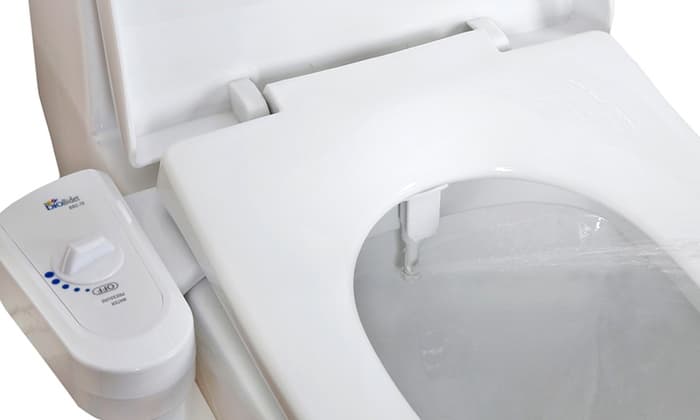Lots of people are beginning to come around to the idea of installing a bidet in their bathroom. Depending on the type of bidet they choose, they may need to familiarize themselves with bidet seat electrical requirements.
Why are we writing about this now? Truth is, in recent months, as people in the United States continue to have to adjust to the “new normal” of quarantines and social distancing, they finally have time to turn to some of the projects they’ve been putting off for so long. Yard work, painting, finally getting rid of that futon that’s been sitting in the back bedroom for years.
And what else? Bidet toilet seats! We’ve heard from lots of customers recently that they’re considering adding a bidet in their bathroom — either as a separate feature or, more often, as an addition to their existing toilet fixture. It certainly saves on toilet paper.
But buying an electronic bidet and installing it isn’t as easy or straightforward as adding a cushioned toilet seat. No, there are some very specific electrical requirements for bidets that must be taken into account.
Some of the more high-end bidets that affix to the inside of your toilet bowl need a power source. And since many bathrooms don’t have an outlet right near the toilet, there are some space and design considerations, too.
Let’s take a quick look at bidet seat electrical requirements, including info on power sources, electrical requirements, and bidet types.
Powering A Bidet — Or Not …
Bidets don’t actually need to be electrical. The stream of pressurized water that does the washing in a bidet doesn’t need a power source. The pressure and the water can be delivered by your own water supply and your current toilet set-up. In some models, you can heat the water using your sink’s hot water connection.
However, electrical bidets that attach to your toilet seat — as opposed to separate, traditional bidet fixtures installed in your bathroom next to your toilet. — have lots of great features, including warm water, for added comfort. For many people, these are well worth the extra price in buying a bidet and the extra steps involved in powering it.
Most of the extras or features of modern bidets do need power. For instance, you can install an electric bidet that warms the cold water from your toilet tank or functions via remote control. Some bidets have a built-in electric mechanism that raises and/or lowers the toilet seat. Others have adjustable pressure, spray-release deodorizers, heated air dryers, and more.
So if you spring for an electric bidet, you’ll need more than just water and water pressure to get the thing functioning at full capacity. You’ll either need an electrical outlet or have the bidet’s cords extend to the sink outlet.
Electrical Requirements For A Bidet
Because we’re dealing with electricity and water, special accommodations should be taken when providing electricity to the bidet.
We know many of you can perform basic DIY installations. But we recommend a licensed electrician. And licensed electricians are likely to recommend a GFCI (ground-fault circuit interrupter) outlet for your bidet seat electrical requirements.
Chances are the outlet near your bathroom sink is a GFCI. That outlet protects you from shocks and is commonly found in bathrooms. When a GFCI senses a ground fault, it shuts off the electrical flow.
If your bidet is close enough and the electrical or extension cord for your bidet is long enough, you can use the power supply next to your current sink area. Power cords are usually 4 feet long.
If you don’t like this set-up, you can power your bidet with an outlet close to the bidet itself. For this, you’ll need to have a professional electrician install an additional three-pronged GFCI outlet of at least 15 amps. Pros can do this quickly and efficiently — sometimes in no more than 30 minutes.
Ask Prairie for details and to set up a residential electric service appointment for you today!




